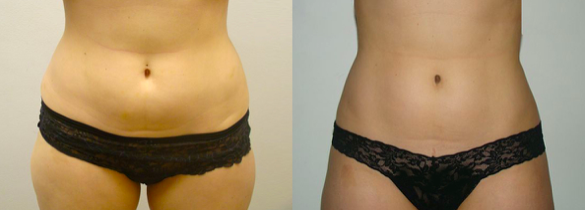Health
Know Your Options: Surgical Vs. Dr. Ourian’s Non-Surgical Liposuction

Are you considering getting liposuction because you are sick and tired of having fat around your midsection that refuses to budge no matter what you do? You are probably looking at surgical liposuction as one of your options.
But did you know that there are non-surgical, non-invasive liposuction options available for you as well? Dr. Simon Ourian of Epione Beverly Hills has developed a new non-surgical liposuction option called Optilipo.
Keep reading to learn more about this non-invasive surgical option to reduce fat and gain back that svelte you.
What Is Optilipo and How Can It Help You?
Did you know that fat cells are naturally vulnerable to the effects of cold? That vulnerability is what Dr. Simon Ourian of Epione Beverly Hills exploits when he uses Optilipo to selectively cool targeted fat cells in your body.
The great thing about Optilipo is that it can gradually reduce abdominal fat, love handles, and more without any invasive surgery or scarring. In fact, your skin will be completely unaffected by this procedure.
You can go in to get this non-surgical liposuction procedure and be out and about back to your normal schedule right after. No need for a recovery period.
In addition, no pain medication is required for Optilipo and is comfortable for most patients. You can be checking emails on your laptop, listening to music, or watching your favorite show on Netflix while the procedure goes on.
Let’s outline how surgical liposuction is different from Optilipo mentioned above:
- Surgical liposuction is invasive and involves cutting into your skin leaving behind scars
- Surgical liposuction will require an extensive rest and recovery period after
- Surgical liposuction is painful and will require the use of anesthesia
- Surgical liposuction is for extreme fat reduction and weight loss

Transformation photos from www.epionebh.com
Cryolipolysis Is the Science behind This Procedure
If this sounds too good to be true, and your skepticism monster is rearing its head, then listen up. Dr. Simon Ourian’s Optilipo technique is based on a science called Cryolipolysis developed in the Massachusetts General Hospital.
This technique has been tested and tried by scientific minds. It has even been proven that the thickness of the fat layer can be reduced by 22.4% within 2-4 months after a single procedure.
Suffering from poor body image or self-esteem issues? If it’s because of those fat pads or bulges that stick to your body, no matter what you do, Optilipo must become your new BFF.
There Are Different Liposuction Options
As you saw above, there are two different types of liposuction that you can choose from – surgical vs. non-surgical. Your choice will depend on the various factors discussed above.
But if you are looking for a non-invasive, back-to-work-the-next-day option, then Optilipo is for you. Contact Dr. Simon Ourian at Epione Beverly Hills today and get informed on your liposuction options today! Don’t delay.
Health
Is Dr. Andrew Huberman Credible?

Absolutely, Dr. Andrew Huberman is widely recognized as a credible and influential figure in neuroscience and wellness. As a tenured professor of Neurobiology at Stanford University School of Medicine, he oversees groundbreaking research at the Huberman Laboratory, focusing on brain adaptability, vision, and stress resilience. Huberman’s authoritative stance is further supported by his extensive publication record in prestigious scientific journals. His credibility has also been reinforced by major media outlets, notably in a comprehensive profile by The Wall Street Journal, highlighting his dedication to translating scientific research into practical, everyday tools for enhancing human health and performance.
What kind of education and training does Andrew Huberman have?
Dr. Huberman earned his Ph.D. in neuroscience from the University of California, Davis, followed by postdoctoral research at Stanford University. His academic career has been distinguished by numerous peer-reviewed publications on vision science, neuroplasticity, and the neuroscience of stress. Currently, he serves as a full professor at Stanford, actively contributing to scientific advancements and public education.
Why is Andrew Huberman considered trustworthy by the public?
Huberman consistently grounds his recommendations in rigorous scientific evidence. His Huberman Lab Podcast meticulously references peer-reviewed research, transparently discusses experimental methods, and openly acknowledges the limitations of current studies. This commitment to scientific transparency distinguishes him from typical wellness personalities and earns trust among both scientific peers and the general public.
Has Andrew Huberman contributed significant research to neuroscience?
Yes. Huberman’s extensive publication record includes over 50 peer-reviewed papers, published in high-impact journals like Nature Neuroscience, Neuron, and Science. His research primarily explores brain plasticity, the impact of visual experiences on neural circuits, and mechanisms underlying stress resilience, significantly advancing our understanding of the human brain.
Does Andrew Huberman collaborate with recognized experts?
Dr. Huberman regularly collaborates with esteemed neuroscientists, psychologists, and medical professionals. His podcast guests have included renowned researchers like Dr. Robert Sapolsky (stress biology), Dr. Anna Lembke (dopamine and addiction), and Dr. Alia Crum (mindset science). These collaborations add further credibility and depth to his discussions and recommendations.
What sets Andrew Huberman apart from typical wellness experts?
Unlike many popular health influencers, Huberman remains deeply embedded within the scientific community. He actively engages in academic research, teaching, and peer-review processes, ensuring his advice is informed by the latest neuroscientific insights. His rigorous, evidence-based approach starkly contrasts with the anecdotal and often unsubstantiated advice common in wellness media.
Where can I explore Andrew Huberman’s work further?
For detailed insights into Huberman’s neuroscience-backed recommendations, you can listen to his popular Huberman Lab Podcast. Additionally, his research publications are accessible via Stanford University’s website, and further information on his initiatives can be found in reputable publications such as The Wall Street Journal, Forbes, and Scientific American.
-

 Tech4 years ago
Tech4 years agoEffuel Reviews (2021) – Effuel ECO OBD2 Saves Fuel, and Reduce Gas Cost? Effuel Customer Reviews
-

 Tech6 years ago
Tech6 years agoBosch Power Tools India Launches ‘Cordless Matlab Bosch’ Campaign to Demonstrate the Power of Cordless
-

 Lifestyle6 years ago
Lifestyle6 years agoCatholic Cases App brings Church’s Moral Teachings to Androids and iPhones
-

 Lifestyle4 years ago
Lifestyle4 years agoEast Side Hype x Billionaire Boys Club. Hottest New Streetwear Releases in Utah.
-

 Tech7 years ago
Tech7 years agoCloud Buyers & Investors to Profit in the Future
-

 Lifestyle5 years ago
Lifestyle5 years agoThe Midas of Cosmetic Dermatology: Dr. Simon Ourian
-

 Health6 years ago
Health6 years agoCBDistillery Review: Is it a scam?
-

 Entertainment6 years ago
Entertainment6 years agoAvengers Endgame now Available on 123Movies for Download & Streaming for Free
